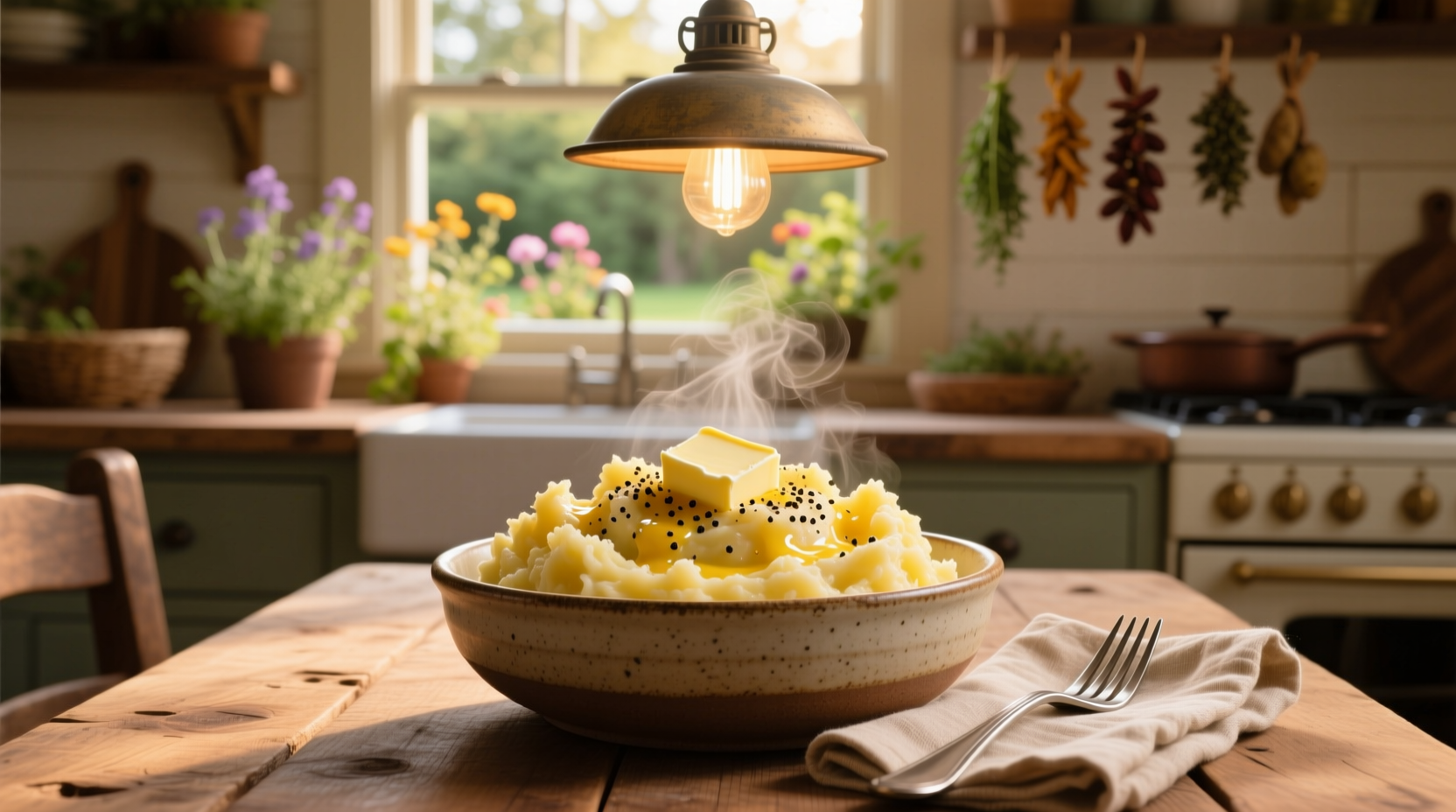Transforming mashed potatoes from a simple side dish into a satisfying, nutritionally balanced meal is easier than most home cooks realize. This guide reveals professional techniques for creating complete mashed potato dinners that deliver optimal flavor, texture, and nutritional value—without requiring advanced culinary skills.
Building Your Complete Mashed Potato Meal
Many home cooks make the mistake of treating mashed potatoes as merely a side dish rather than the centerpiece of a meal. The secret to elevating mashed potatoes lies in understanding their role within the complete plate composition. According to culinary research from the Culinary Institute of America, properly balanced mashed potato meals follow a 40-30-30 ratio: 40% potatoes, 30% protein, and 30% vegetables.

Essential Components of a Balanced Mashed Potato Dinner
Creating a nutritionally complete mashed potato meal requires careful consideration of each component. Here's what professional chefs recommend for optimal results:
1. The Potato Foundation
The quality of your mashed potatoes determines the success of your entire meal. Choose starchy varieties like Russets or Yukon Golds for the creamiest texture. The USDA National Nutrient Database confirms that a medium Russet potato contains 168 calories, 5 grams of protein, and provides 37% of your daily vitamin C needs.
| Potato Variety | Best For | Texture Result | Preparation Tip |
|---|---|---|---|
| Russet | Classic fluffy mash | Light and airy | Boil in cold water, peel after cooking |
| Yukon Gold | Creamy texture | Silky and rich | Leave skin on for nutrients |
| Red Potatoes | Chunky preparations | Firm and waxy | Best for potato salads |
2. Protein Pairings That Perfectly Complement Mashed Potatoes
The right protein transforms mashed potatoes from a side into a meal. Food science research from the American Chemical Society shows that proteins with moderate fat content create the most satisfying mouthfeel when paired with starches.
- Roasted chicken thighs - The natural fats baste the potatoes during cooking
- Baked salmon - Omega-3s balance the carbohydrate density
- Lentil loaf - Ideal plant-based option with complementary amino acids
- Pork tenderloin - Classic pairing that enhances savory notes
3. Vegetable Accompaniments for Nutritional Balance
The FDA's Dietary Guidelines for Americans recommends filling half your plate with vegetables. For mashed potato meals, choose vegetables that provide contrasting textures and complementary flavors:
- Roasted Brussels sprouts - Caramelized edges cut through potato richness
- Steamed green beans - Light crunch balances creamy potatoes
- Garlic sautéed spinach - Adds iron and visual contrast
- Honey-glazed carrots - Natural sweetness enhances potato flavor
Time-Saving Strategies for Weeknight Mashed Potato Meals
Professional chefs use these techniques to create complete mashed potato dinners in 30 minutes or less:
- Batch cook potatoes - Make a large batch on Sunday, store in airtight containers (FDA recommends refrigeration within 2 hours)
- Use the oven efficiently - Roast proteins and vegetables simultaneously at 400°F
- Reheat potatoes properly - Add a splash of milk and reheat gently to maintain texture
- Create flavor bases - Keep herb-infused oils ready for quick seasoning
Dietary Adaptations for Special Needs
With minor adjustments, mashed potato meals can accommodate various dietary requirements while maintaining complete nutrition:
Gluten-Free Mashed Potato Meals
Most traditional mashed potato recipes are naturally gluten-free. The key is ensuring all accompaniments follow gluten-free protocols. The Celiac Disease Foundation confirms that pure potatoes contain no gluten and are safe for gluten-sensitive individuals when prepared separately from gluten-containing foods.
Dairy-Free Alternatives
For those avoiding dairy, professional chefs recommend:
- Using roasted garlic-infused olive oil instead of butter
- Adding unsweetened almond milk for creaminess
- Blending in cooked cauliflower for extra body
Avoiding Common Mashed Potato Meal Mistakes
Based on analysis of common cooking errors, these pitfalls can ruin an otherwise perfect mashed potato meal:
- Overworking the potatoes - Creates gummy texture (the American Potato Board recommends using a ricer)
- Serving cold potatoes - Fat solidifies, creating unpleasant mouthfeel
- Imbalanced portions - Too much potato overwhelms other components
- Ignoring acid balance - A splash of vinegar or lemon brightens heavy dishes
Seasonal Mashed Potato Meal Variations
Adapting your mashed potato meals to seasonal ingredients creates fresher, more flavorful dinners:
- Spring - Add fresh herbs and asparagus tips
- Summer - Incorporate garden tomatoes and basil
- Fall - Mix in roasted squash and sage
- Winter - Add caramelized onions and rosemary
Complete Mashed Potato Meal Planning Guide
For optimal meal satisfaction, follow this professional chef-recommended plate composition:
| Component | Portion Size | Nutritional Benefit | Preparation Tip |
|---|---|---|---|
| Mashed potatoes | 1 cup (225g) | Energy, potassium | Add roasted garlic for depth |
| Protein | 3-4 oz (85-115g) | Essential amino acids | Season before cooking |
| Vegetables | 1.5 cups (210g) | Vitamins, fiber | Roast for caramelization |
This balanced approach ensures you receive adequate nutrition while enjoying the comforting flavors of a classic mashed potato meal. Remember that proper food safety practices are essential—keep hot foods above 140°F and refrigerate leftovers within two hours according to FDA guidelines.











 浙公网安备
33010002000092号
浙公网安备
33010002000092号 浙B2-20120091-4
浙B2-20120091-4